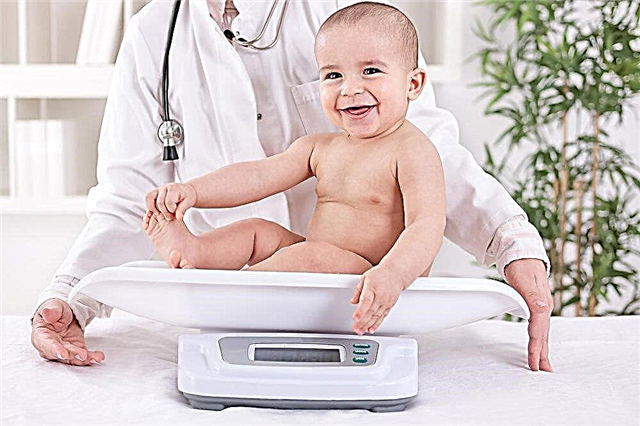
Rotavirus can cause a rather dangerous disease. Infants are very sensitive to infection with these microbes. This article will tell you about the symptoms of this disease and what is the treatment for rotavirus infection in infants.

The very first signs
According to statistics, babies aged 6 months to two years most often get sick with this infectious disease. It is believed that up to six months, the baby is still immune to this infection, but in the future it gradually weakens.
The first signs of the disease do not develop immediately. A viral infection has a specific incubation period. During this time, rotaviruses accumulate in the infected organism and "prepare" to exert their effect. The incubation period for this infection usually lasts from several hours to a couple of days. After its termination, the infant has adverse symptoms.
One of the characteristic symptoms of infection is fever. It usually builds up rather quickly. By the end of the first day after the onset of the disease, its numbers can reach 38-38.5 degrees Celsius.

Against the background of such a febrile condition, the baby feels very bad. The child becomes lethargic, inactive. The baby's appetite is significantly reduced. Vomiting may occur against a background of high fever. Febrile condition can also be accompanied by fever. A child's skin can change color - at first it can be bright red, and then pale.
In some cases, it can be quite difficult to reduce the high body temperature of a baby. Taking antipyretic drugs does not lead to a quick positive effect. The body temperature of the sick crumbs returns to normal only 4-5 days after the onset of the disease.
The second common symptom of rotavirus infection is stool disorder. It is no coincidence that this disease is also popularly called intestinal flu. Diarrhea is a classic symptom for this infection. The baby's stool becomes watery, repeated.

Diarrhea is often accompanied by the appearance of soreness in the abdomen. A newborn baby still cannot tell his parents about it in words. To express his own discomfort, he uses another "communication system" - crying. The sick child's behavior changes immediately.
Feeling pain in the abdomen, the baby cries strongly and painfully. Attempts to take the baby in your arms and calm them down often do not lead to a positive result. Attempts to touch the tummy can lead to increased pain, which is manifested by increased crying.

How to recognize a disease?
Rotavirus infection does not start the same way in all cases. It also happens that the first symptoms are very similar to the flu or SARS. In this case, the sick baby first has a runny nose and cough. In this case, nasal breathing becomes difficult, the child begins to breathe through the mouth.
Redness in the throat is one of the rather typical symptoms. Rotavirus usually infects the back of the throat. The inflamed throat zone becomes bright red in color, the mucous membranes look swollen and loose.
The baby may also be bothered by coughing. It is usually dry. Sputum, as a rule, occurs when a secondary bacterial flora joins the rotavirus infection. In this case, the child's already light yellow sputum begins to recede, and the general condition worsens. Adverse catarrhal symptoms usually last 6-8 days from the onset of the illness.

In babies under 1 year old, rotavirus infection can take longer. The initial state of the child also significantly affects the duration of the persistence of adverse symptoms. Weakened babies get sick, as a rule, a little longer.
In very young children, rotavirus infection can be completely atypical. In this case, the child does not develop diarrhea. With this clinical variant of the disease, only intestinal colic occurs, but there is no stool disorder. Also, the baby's appetite decreases, he does not attach well to the mother's breast for feeding.
With such a clinical variant of the disease, it is rather difficult to suspect the disease.

It is very important that if a baby has any discomfort in the abdomen, immediately show it to the pediatrician. The doctor, after conducting a clinical examination of the child, will be able to establish the probable cause of the development of adverse symptoms in him.
Another difficulty in diagnosing is that rotavirus infection can be easily confused with eating disorders. Toxic infections can develop in infants while receiving the first complementary foods. In this case, a differential diagnosis is required, which only a doctor can carry out.
Norovirus infection can lead to the development of similar symptoms. Noroviruses are the cause. Norovirus, along with rotavirus, is a fairly common cause of intestinal infections in babies.
The similarity of these infections is quite high. For a long time, pediatricians made only one general diagnosis of "rotavirus infection", implying possible infection with both rotaviruses and noroviruses.

Currently, these infections are divided. It is possible to differentiate a specific infection in an infant only through the use of special diagnostic methods.
How can a baby get infected?
Rotavirus infection refers to a viral disease called dirty hand disease. Rotaviruses are well preserved on the skin. The only way to prevent infection is by keeping in mind that you regularly follow the rules of personal hygiene. Unwashed hands in time can cause the development of the disease. It is important for parents to remember that Before touching a child, they should definitely wash their hands thoroughly.
Babies up to 10-12 months old quite often get rotavirus infection after eating spoiled food. The thing is that rotaviruses are well preserved in fermented milk products. Microbes can also persist in a refrigerator.


Rotavirus infection can also occur through airborne droplets. In this case, viruses from the nasopharynx of the infected parent get to the baby. Infection in such a situation develops rather quickly.
Familial outbreaks of rotavirus infection are also common. From a sick person, other family members begin to become infected as a chain. If there are several kids in the family, then, as a rule, they get sick pretty quickly.

How is therapy carried out?
On average, rotavirus infection in babies lasts about 4-8 days. During this time, the acute period of the disease completely passes and convalescence occurs (recovery until recovery).
It is important to note that currently, no specific therapy for this infection has been developed... The main goal of treatment is to prevent dangerous complications that sometimes develop due to diarrhea. Also, during treatment, it is very important to normalize the child's body temperature and cope with the consequences of intoxication syndrome.
Symptomatic therapy must be included in any treatment regimen for rotavirus infection. It is called so because it is used to eliminate the adverse symptoms that have arisen in the child during the illness.

Replenish water and electrolyte disturbances
Dr. Komarovsky believes that in case of rotavirus infection, rehydration is very important - replenishment of water-salt metabolism in the child's body. With frequent loose stools, the baby loses quite a lot of water, as well as electrolytes dissolved in it. This can provoke electrolyte disorders in the child, as well as disturbances in the functioning of the heart and brain. In order to prevent these dangerous complications, rehydration is used.
To restore the general condition, doctors recommend giving sick children ordinary boiled water. The total amount of additional fluid introduced is calculated by the pediatrician after examining the child. To calculate the required amount of water that a baby needs for rehydration, the pediatrician must take into account the baby's age and body weight.
Give water to the baby gradually. Start with ½ teaspoon, increasing the amount of liquid as needed. Experts recommend watering sick children in this way every 20-30 minutes.

It is very important not to provoke vomiting in the baby when water is introduced. To do this, do not give your baby too much liquid at once. It is better to divide the required volume into several parts. In this case, the risk of developing vomiting is reduced.
The best drink for rehydration at home is regular boiled water. Babies who already drink dried fruit compotes can also be given them. However, this should be done carefully. In this case, it is imperative to watch the child's individual reaction. In some toddlers, fruit compote can contribute to loose stools. In this case, it should be excluded and plain water should be left.
In difficult clinical situations, when the degree of dehydration of the baby is very high, it is impossible to rehydrate at home. In this case, the child is hospitalized in a hospital, where he will be injected with special medicinal solutions to compensate for the water-electrolyte balance through droppers. Usually such situations occur when the baby's body temperature is very high, as well as with indomitable vomiting or diarrhea.

Fighting high body temperature
Febrile is a special signal of the child's body that it is actively fighting infection. If the body temperature has not yet reached 38 degrees, then it should not be reduced. In this case, you can interfere with the work of the immune system and slow down the natural healing process.
It is important to remember that a very high body temperature in a child can cause febrile seizures. In order to avoid this, the baby is prescribed special antipyretic drugs. To normalize body temperature in children's practice, syrups containing ibuprofen, such as Nurofen, are often prescribed. Also, rectal antipyretic suppositories will help bring down the high temperature.

It should be remembered that when the temperature drops in the first days of the illness, there is no particular goal to reduce its numbers to 36.6 degrees. It is only necessary to achieve its decrease below 38 degrees. In this case, the child's body will continue to fight the infection on its own.
If the baby's fever builds up, then his body can be rubbed with plain water. The water temperature for this procedure should be comfortable. Wipe one area of the body after another. After treating one area, blot well with a soft towel.
During these rubdowns, be sure to control the temperature in the children's room. It should not be below 20 degrees. Also check if windows and vents are closed in the children's room at this time. Any draft during the procedure can provoke hypothermia in the child.

Reduce abdominal pain
If the baby has intestinal colic, then this causes him severe discomfort. The child begins to cry, can touch his tummy. Some babies try to lie more on their backs, since coups can provoke an increase in their pain syndrome.
Antispasmodics can cope with intestinal colic. These funds are selected individually, taking into account the age of the baby. One of these drugs is Riabal. For very young patients, it is prescribed in the form of a syrup. This drug not only helps with intestinal colic, but also reduces vomiting.

It is important to remember that before giving the remedy to the baby, you should definitely consult a pediatrician. There are contraindications for each medicine, which can only be determined by a doctor.
We strengthen the immune system
The need to prescribe any intestinal antiseptics is determined by the attending physician. Basically, these funds are prescribed only if the sick baby has signs of a secondary bacterial infection that has joined. In such a situation, the therapy scheme is drawn up individually, taking into account the general well-being of the child.
Weakened children may need immunostimulants or immunomodulators. These funds affect the functioning of the immune system, "forcing" it to work more efficiently. As such a drug in children's practice, Citovir is often used.


Also, sick babies can be prescribed interferon preparations. Usually for infants, they are prescribed in the form of rectal suppositories. Typically, the average duration of such therapy is 5 days. The treatment regimen is selected individually.
Is a diet necessary?
Babies who are breastfed should continue to give breast milk. It is important not to overfeed the child. Too large portions can provoke vomiting in the crumbs. Feeding should be more frequent, but smaller portions.
It is better to transfer babies who are artificially fed to dairy-free formulas during the illness. Such a diet will not provoke an increase in stool frequency.
To date, fortunately, specific prevention of rotavirus infection has been developed. For this, children are vaccinated against rotavirus. Modern vaccines "Rotatek" and "Rotarix" make it possible to form a fairly strong immunity in children.
These drugs are drops that are given orally to babies. The vaccination schedule includes two vaccinations with an interval of at least 40 days.

You can vaccinate babies who have reached 1.5 months of age. Parents can always discuss the importance and necessity of vaccinating against rotavirus infection with their pediatrician.
Dr. Komarovsky will tell you everything about rotavirus in the next video.



